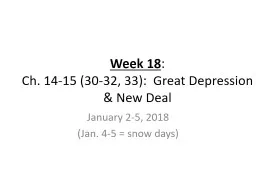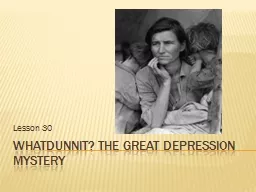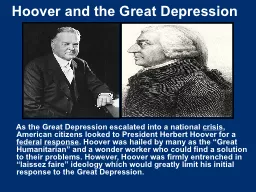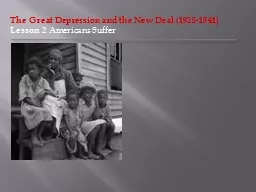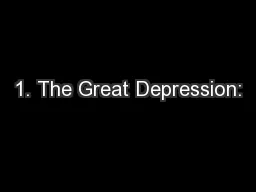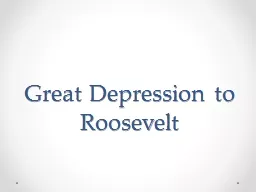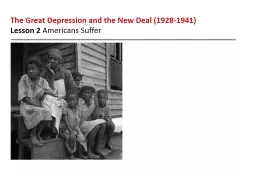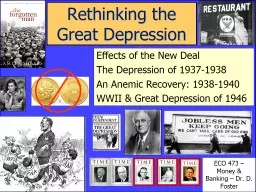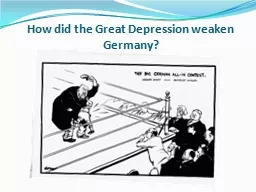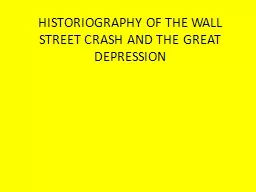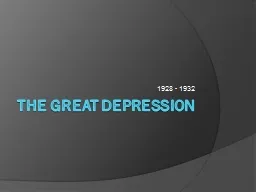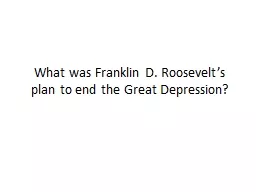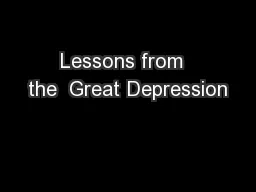PPT-Week 18 : Ch. 14-15 (30-32, 33): Great Depression
Author : tatyana-admore | Published Date : 2018-11-11
amp New Deal January 25 2018 Jan 45 snow days Why are we here this week Students will complete Ch 14 Great Depression HA 3032 collaborative opennotes assessments
Presentation Embed Code
Download Presentation
Download Presentation The PPT/PDF document "Week 18 : Ch. 14-15 (30-32, 33): Grea..." is the property of its rightful owner. Permission is granted to download and print the materials on this website for personal, non-commercial use only, and to display it on your personal computer provided you do not modify the materials and that you retain all copyright notices contained in the materials. By downloading content from our website, you accept the terms of this agreement.
Week 18 : Ch. 14-15 (30-32, 33): Great Depression: Transcript
Download Rules Of Document
"Week 18 : Ch. 14-15 (30-32, 33): Great Depression"The content belongs to its owner. You may download and print it for personal use, without modification, and keep all copyright notices. By downloading, you agree to these terms.
Related Documents

